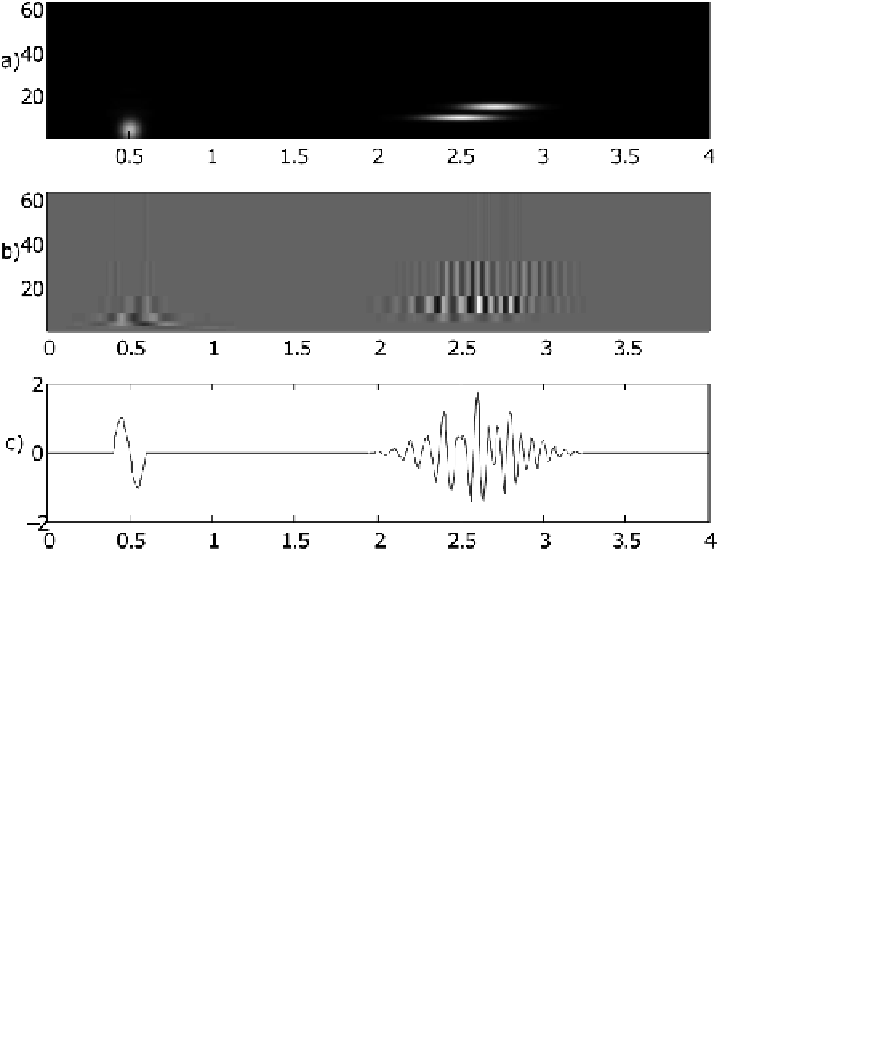Biomedical Engineering Reference
In-Depth Information
working in the time-frequency domain. The method providing parametrization in the
time-frequency space is wavelet analysis, which was applied, e.g., by [Jobert, 1992].
However the parametrization of signal structures in wavelet analysis is bound by
the predetermined framework (usually dyadic) in the time-frequency space. There-
fore, a given structure may be described by wavelet coefficients belonging to several
scale levels in time and frequency (Figure 4.11). The description is not sparse and is
not related to the physiological characteristics of the transient. The method, which
FIGURE 4.11:
Comparison of time-frequency representation of sleep structures
of a signal (c) consisting of idealized K-complex and two spindles. a) and b) repre-
sentations obtained by means of MP and WT (Coiflet3), respectively. Note that MP
separates the two spindles overlapping in time and close in frequency.
is maximally adaptive, supplies the parametrization of the rhythmical components
and transients in the same framework and characterizes the structures of the signal
by means of parameters compatible with the clinical definitions is matching pursuit.
Therefore, we shall discuss this method in a larger extent. The t-f distribution of EEG
from different sleep stages obtained by means of MP are shown in
Figure 4.12;
data
structures corresponding to rhythmic and transient components can be easily distin-
guished. In MP the signal structures are characterized by the frequency, time span,







Search WWH ::

Custom Search